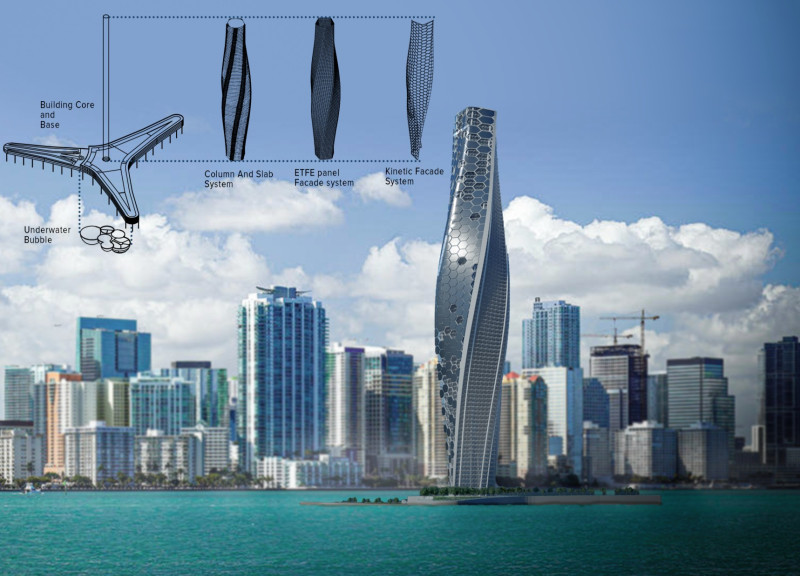5 key facts about this project
The Ark is a high-rise building located in Biscayne Bay, Miami, designed to tackle the issues posed by rising sea levels. It combines residential and hotel spaces, which are separated vertically for better privacy and easier access. The design concept highlights adaptability and sustainability, aiming to set a benchmark for urban living in coastal areas.
Design Composition
The building features a twisting tower that enhances its visibility while providing stability through a special anchoring system connected to the seabed. This aspect is not solely decorative; it serves a practical function by addressing the conditions of its maritime location. The design facilitates natural ventilation and helps regulate the building's temperature, which is important in Miami's warm climate.
Public Engagement
A key aspect of The Ark is the Underwater Bubble space, which is designed to serve as a knowledge center, gallery, and restaurant. This multifunctional area encourages interaction with the community and promotes a connection to the local marine environment. Visitors can access these facilities through bridges and waterways, making it easier to connect with the waterfront and supporting a sense of community engagement.
Sustainable Technologies
The façade includes a kinetic system that allows the exterior to respond to different environmental conditions. The Solar Fabric used in the façade contains solar cells, which helps generate electricity while providing shade. This design choice reduces the need for heating and cooling systems, thereby enhancing overall energy efficiency. The use of such technology demonstrates a commitment to sustainable practices in architecture.
Ecological Considerations
The Ark engages thoughtfully with marine ecology, striving to raise the standard for future coastal developments. The design promotes awareness of ecological issues, showing an understanding of urban living in a coastal setting. It is more than just a structure; it reflects a balance between ecological responsibility and urban needs. The movement of the kinetic façade mirrors the natural rhythms of the bay, reinforcing a connection between the building and its surroundings.



















































